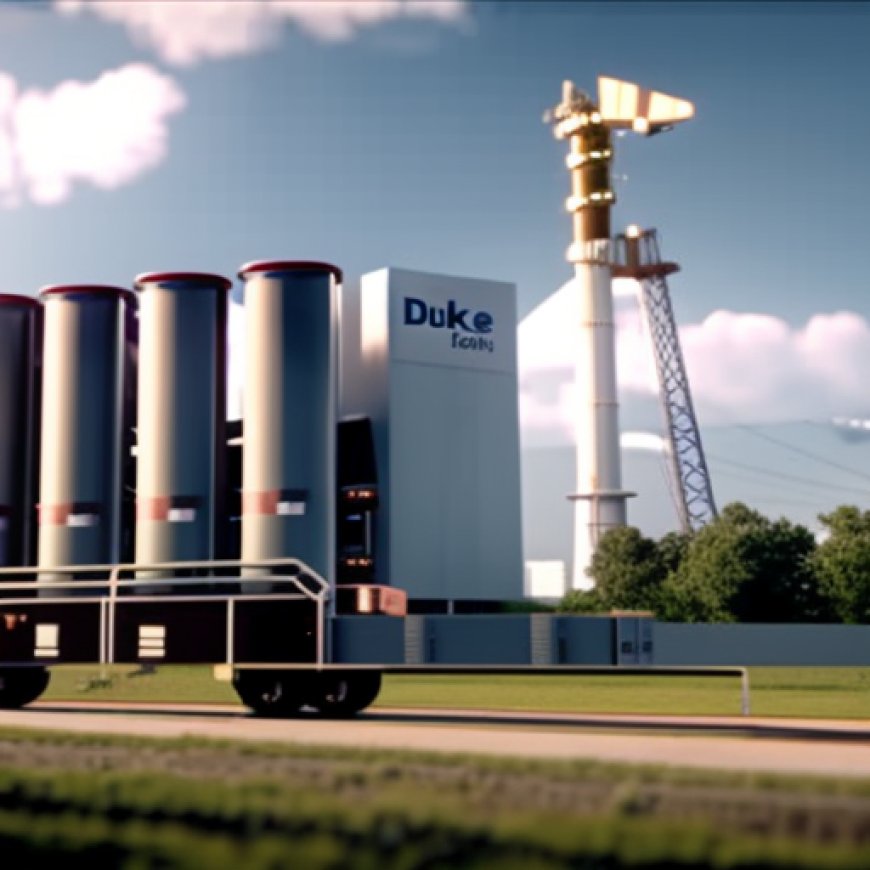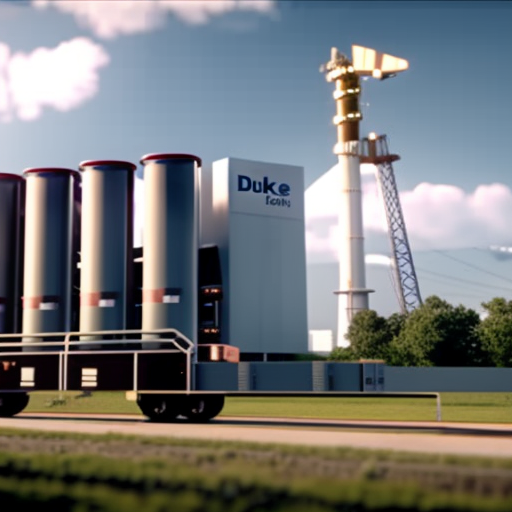Duke Energy Florida files for new base rates; announces fuel filing to reduce rates in 2024, expects overall lower customer bills in 2025
Duke Energy Florida files for new base rates; announces fuel filing to reduce rates in 2024, expects overall lower ... Duke Energy News Center


Company Files New Base Rates and Proposed Energy Efficiency Programs
-
Company also filed new proposed energy efficiency programs
ST. PETERSBURG, Fla. – Duke Energy Florida has submitted a filing for new base rates with the Florida Public Service Commission (FPSC). The company has also requested approval for new cost-effective energy efficiency goals and programs to help customers save on energy bills.
Base Rates
The base rate filing includes investments in innovative technologies to improve efficiency, reduce outages, and pass on savings to customers. It also involves the addition of 14 new solar sites, which will contribute 1,050 megawatts of clean energy. More information about these investments can be found here. The expected impact of the base rate changes will result in an average annual increase of approximately 4% of the total bill from 2025 to 2027. For an average residential customer, the rate impact will be around $16.48 in 2025, $2.73 in 2026, and $4.93 in 2027 on a 1,000-kilowatt bill.
Despite the base rate increase, Duke Energy Florida anticipates a decrease in overall customer bills in January 2025 compared to January 2024. This is due to the expiration of the 2022 fuel under-recovery, storm restoration cost recovery, and some legacy purchased power contracts by the end of 2024. The removal of these costs will lead to lower customer bills, marking the second consecutive year of decreased residential customer rates.
Duke Energy Florida recognizes the need to anticipate changes in the energy industry driven by population growth, technological advancements, and customer expectations. The proposed investments aim to reduce emissions, decrease outages, and provide customers with price stability and certainty.
2024 Rate Reduction and Cost Management
Duke Energy Florida plans to file a fuel and capacity rate request to reflect falling natural gas cost projections. This will result in a reduction of over $5 in a typical residential 1,000-kWh customer bill. Combined with the $11.29 decrease from 2023, customers could see a decrease in bills as early as June or July.
The company is committed to delivering diverse fuel options, including solar power generation, and managing fuel and generation resources in a cost-effective manner for customers. Duke Energy Florida aims to provide rate relief and exceptional service to its customers.
Energy Efficiency Filing
Duke Energy Florida has also submitted its Florida Energy Efficiency and Conservation Act (FEECA) goals and proposed programs to the FPSC for approval. These programs aim to help conserve energy in a cost-effective manner.
The company plans to continue supporting its current residential and commercial energy efficiency and demand response programs. This includes maintaining both the Neighborhood Energy Saver and Low-Income Weatherization programs, as well as offering energy audits for residential and commercial customers.
- Home Energy Check: This program provides customers with an analysis of their energy consumption and offers educational information on how to reduce energy usage and save money. Customers can choose from in-person home walk-throughs, phone-assisted audits, or online audits. At the completion of the audit, Duke Energy Florida provides energy-saving kits that customers can easily install themselves.
- Neighborhood Energy Saver: Low-income/income-qualified customers can participate in the Low-Income Weatherization Assistance Program and Neighborhood Energy Saver (NES) program. NES offers free walk-through energy assessments to help customers understand their energy usage and lower their monthly electric bills. Qualified customers also receive up to 16 free energy-saving products, such as energy-efficient lightbulbs and water-saving showerheads and faucets.
- EnergyWise® Home: Customers can receive bill credits while helping reduce energy use during periods of high demand. This program provides energy savings and demand reduction through the installation of energy-efficient equipment.
- New Builder Construction Bundle: Duke Energy Florida is proposing a new bundle offering for builders that allows for the installation of energy efficiency measures and provides incentives for participation.
The specific program changes will be determined after the goals are approved by the FPSC.
Connecting Customers with Billing Assistance
Duke Energy Florida remains committed to offering programs and assistance options to low-income customers. This includes connecting customers with assistance agencies that administer the Low-Income Home Energy Assistance Program and Elderly Home Energy Assistance Program. The company also manages and contributes to its Share the Light Fund®, which provides energy bill assistance to qualifying Florida customers.
About Duke Energy Florida
Duke Energy Florida, a subsidiary of Duke Energy, supplies electricity to 2 million residential, commercial, and industrial customers across a 13,000-square-mile service area in Florida. The company owns 12,300 megawatts of energy capacity, including 14 new solar sites. Duke Energy is one of America’s largest energy holding companies, serving 8.2 million customers in multiple states. The company is committed to achieving net-zero carbon emissions from electricity generation by 2050 and has set interim targets to reduce carbon emissions. Duke Energy is also investing in grid enhancements, energy storage, and exploring zero-emission power generation technologies.
For media inquiries, please contact Ana Gibbs at 800.559.3853.
SDGs, Targets, and Indicators
| SDGs | Targets | Indicators |
|---|---|---|
| SDG 7: Affordable and Clean Energy | 7.3: Double the global rate of improvement in energy efficiency | New cost-effective energy efficiency goals and programs proposed by Duke Energy Florida |
| SDG 9: Industry, Innovation, and Infrastructure | 9.4: Upgrade infrastructure and retrofit industries to make them sustainable | Investments in innovative technologies to increase efficiency and reduce outages |
| SDG 11: Sustainable Cities and Communities | 11.6: Reduce the adverse per capita environmental impact of cities | Proposed energy efficiency programs to help conserve energy in residential and commercial buildings |
| SDG 13: Climate Action | 13.2: Integrate climate change measures into national policies, strategies, and planning | Investments in clean energy, such as 14 new solar sites adding 1,050 megawatts of clean energy |
1. Which SDGs are addressed or connected to the issues highlighted in the article?
- SDG 7: Affordable and Clean Energy
- SDG 9: Industry, Innovation, and Infrastructure
- SDG 11: Sustainable Cities and Communities
- SDG 13: Climate Action
2. What specific targets under those SDGs can be identified based on the article’s content?
- Target 7.3: Double the global rate of improvement in energy efficiency
- Target 9.4: Upgrade infrastructure and retrofit industries to make them sustainable
- Target 11.6: Reduce the adverse per capita environmental impact of cities
- Target 13.2: Integrate climate change measures into national policies, strategies, and planning
3. Are there any indicators mentioned or implied in the article that can be used to measure progress towards the identified targets?
- New cost-effective energy efficiency goals and programs proposed by Duke Energy Florida can be used to measure progress towards Target 7.3.
- Investments in innovative technologies to increase efficiency and reduce outages can be used to measure progress towards Target 9.4.
- Proposed energy efficiency programs to help conserve energy in residential and commercial buildings can be used to measure progress towards Target 11.6.
- Investments in clean energy, such as 14 new solar sites adding 1,050 megawatts of clean energy, can be used to measure progress towards Target 13.2.
SDGs, Targets, and Indicators
| SDGs | Targets | Indicators |
|---|---|---|
| SDG 7: Affordable and Clean Energy | 7.3: Double the global rate of improvement in energy efficiency | New cost-effective energy efficiency goals and programs proposed by Duke Energy Florida |
| SDG 9: Industry, Innovation, and Infrastructure | 9.4: Upgrade infrastructure and retrofit industries to make them sustainable | Investments in innovative technologies to increase efficiency and reduce outages |
| SDG 11: Sustainable Cities and Communities | 11.6: Reduce the adverse per capita environmental impact of cities | Proposed energy efficiency programs to help conserve energy in residential and commercial buildings |
| SDG 13: Climate Action | 13.2: Integrate climate change measures into national policies, strategies, and planning | Investments in clean energy, such as 14 new solar sites adding 1,050 megawatts of clean energy |
Behold! This splendid article springs forth from the wellspring of knowledge, shaped by a wondrous proprietary AI technology that delved into a vast ocean of data, illuminating the path towards the Sustainable Development Goals. Remember that all rights are reserved by SDG Investors LLC, empowering us to champion progress together.
Source: news.duke-energy.com

Join us, as fellow seekers of change, on a transformative journey at https://sdgtalks.ai/welcome, where you can become a member and actively contribute to shaping a brighter future.







